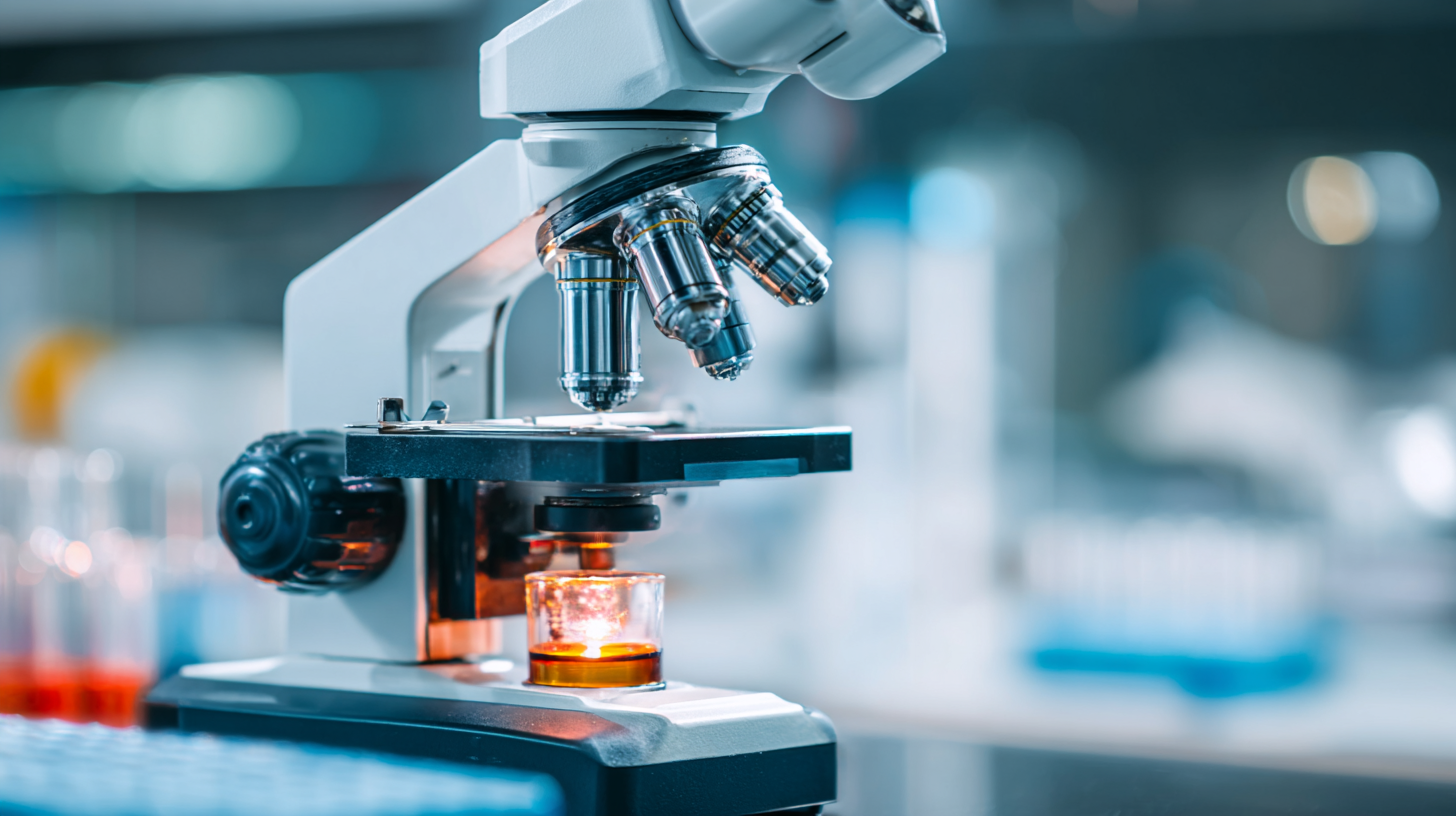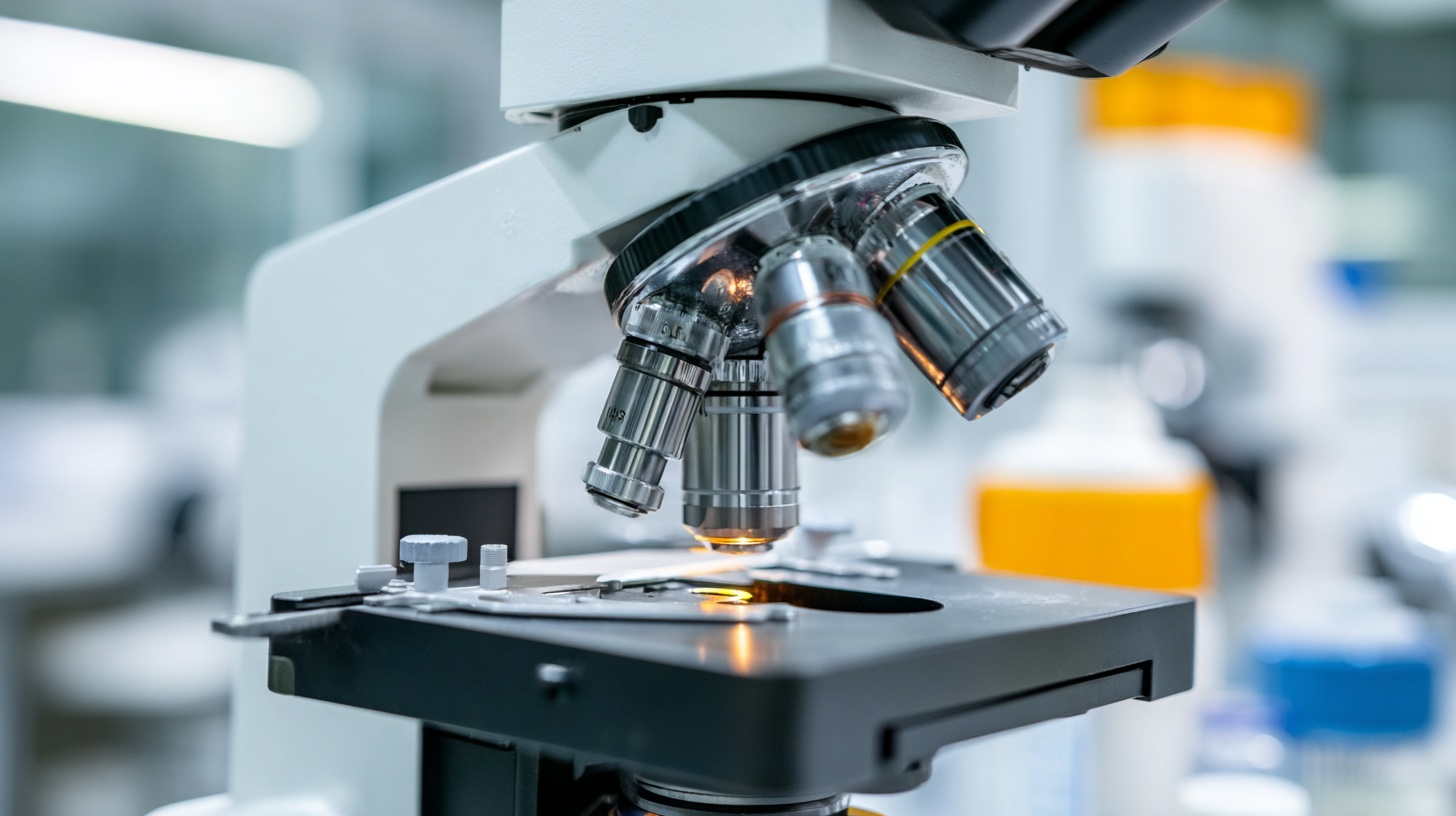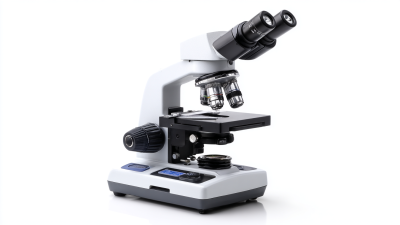- Home Page
- Company Profile
-
Our Products
- Microscope
- CONFOCAL MICROSCOPES
- Trinocular Upright Metallurgical Microscope
- Portable Grooved Metallurgical Microscope
- Cell Culture Imaging System
- Metallurgical Microscope
- Projection Microscope
- Student Stereo Microscope
- BINOCULAR STEREO ZOOM MICROSCOPE
- PCB Inspection Video Stereoscope Microscope
- SPINNERET MICROSCOPE
- Penta Head Microscope/ Multi view Head Microscope
- Research Polarising Microscope
- Senior Dissecting Microscope
- Dissecting Microscope
- Motorized Comparision Microscope
- Sieves Digital Microscopes
- Advance Inverted Tissue Culture Microscope
- Advance Stereo Zoom Microscope
- Student Projection Microscope
- Inverted Metallurgical Microscope
- Measuring Microscope
- Digital Spinneret Inspection Microscope
- Portable Inverted Tissue Culture Microscope
- Binocular Inverted Tissue Culture Microscope
- Student Compound Microscope
- Trinocular Stereozoom Microscope
- Advanced Research Microscope
- Gemological Microscope
- Polarizing Projection Microscope
- Senior Inspection Spinneretscope
- Confocal Microscope
- Senior Projection Microscope
- Toolmaker's Microscope
- Research Microscope
- Stereo Inspection Microscope
- Student Medical Microscope
- Digital Biological Microscope RXLr-4D
- Toolmaker Microscope Large
- Stereo Inspection Scope
- Trinocular Research Microscope
- Portable Metallurgical Microscope
- Binocular Research Microscope
- Student School Microscope
- Inverted Tissue Culture Microscope
- Projection Microscope
- Laboratory Microscope
- Decca Head Microscope
- Advanced Research Material Microscope
- Microtomes
- Semi Automatic Rotary Microtome
- Senior Precision Rotary Microtome
- Rocking Microtome
- Rotary Microtome Erma Type
- Freezing Microtome
- Fully Automatic Rotary Microtome
- Manual Rotary Microtome RMT-25
- Advance Rotary Microtome
- Hand Table Microtome
- Knife Sharpener Microtome
- Sliding Miocrotome
- Slide Staining Machine
- Rotary Microtome
- CRYOSTAT MICROTOME
- Optical Instruments
- Tissue Processor Machine
- Microscope Accessories
- Histopathological Equipment
- Lab Instrument
- Radical Digital Turbidity Meter
- Radical Microprocessor Dissolved Oxygen Meter
- Digital Photo Colorimeter
- Tap Density Tester
- Serological Water Bath
- Magnetic Stirrer
- Dual Channel Flame Photometer
- pH or mv or Conductivity
- Round Centrifuge
- Radical Disintegration Test Apparatus
- Digital Slide Scanner
- Precision Water Bath
- Incubator Shaker Water Bath
- Hemoglobin meter
- Microprocessor Colony Counter
- PASS BOX DYNAMIC
- Radical Microprocessor Colony Counter
- Bulk Density Apparatus
- Laboratory Rectangular Hot Plates
- Tablet Dissolution Test Apparatus
- Hemoglobin Meter (Sahli's)
- Micro Centrifuge 16000 R.P.M.
- Revolutionary General Purpose Digital Centrifuge
- Vortex Shaker
- Rectangular Water Bath
- Heating Mantel
- Digital Spectrophotometer
- Haematocrit Centrifuge
- Water Distillation with Metal Heater
- Hand Specimen Leveler Press
- GROSSING TABLE
- COOLING PLATE
- MICROPROCESSOR PH METER
- DIGITAL FLAME PHOTOMETER
- pH/mV/TEMPERATURE TESTER
- DIGITAL PH, CONDUCTIVITY & TEMPERATURE METER
- Radical Auto Karl Fischer Titrimeter
- Stereo Zoom Microscope
- Jewellery Making Microscope
- Binocular Stereo Microscope
- Advanced Stereo Zoom Microscope
- Articulated Trinocular Stereo Zoom Microscope
- Digital 3D Inspection Microscope
- Binocular Stereo Microscopes
- Motorized Stereo Microscopes
- Trinocular Microscope
- Stereo Inspection Microscope
- Stereo Microscope
- Digital 3D Inspection Microscope RSZ-3D
- Stereo Zoom Microscope RSM-8
- Polarising Microscopes
- Lab Consumables
- Profile Projector
- Optical Profile Projector
- Vertical Profile Projector
- Profile Projector RPP-500
- Profile Projector
- PROFILE PROJECTOR
- Universal Profile Projector
- Bench Type Profile Projector
- Charpy Profile Projector
- High Sharpness Profile Projector
- Profile Projector
- Horizontal Profile Projector
- Digital Profile Projector
- Radical Profile Projector
- Coaxial Profile Projector
- Anotomy Model
- Metallurgical Microscope
- Microscope
- Contact Us

Choosing the Best Laboratory Microscope: A Complete Guide for Beginners in 2023
In the rapidly evolving field of microscopy, selecting the appropriate Laboratory Microscope is crucial for researchers and students alike. According to a 2022 report by Market Research Future, the global microscope market is projected to reach approximately $5.3 billion by 2027, emphasizing the growing significance of advanced microscopy technologies in various scientific domains. With the increasing demand for high-resolution imaging and detailed analysis in laboratories, beginners often find themselves overwhelmed by the plethora of options available. This guide aims to demystify the process of choosing the best Laboratory Microscope by outlining essential features, types, and applications, ensuring that even novice users can find the right tool to suit their specific needs and enhance their research capabilities in 2023.

Table of Contents
[Hide]
Understanding Different Types of Laboratory Microscopes: A Comprehensive Overview
When embarking on the journey of choosing a laboratory microscope, it's essential to understand the different types available in the market. According to the Market Research Future report, the global microscope market is expected to reach approximately $5.2 billion by 2025, reflecting the growing demand for advanced imaging technologies across various sectors, including healthcare, research, and education. Among the most common types of laboratory microscopes are optical, electron, and digital microscopes, each serving unique purposes and applications.
Optical microscopes, which have remained a staple in laboratory settings, utilize visible light and lenses to magnify samples. They are widely used in biological research and clinical laboratories due to their ease of use and cost-effectiveness. In contrast, electron microscopes, which use beams of electrons, provide much higher resolutions and are vital for materials science and nanotechnology advancements. Data from Grand View Research indicates that the electron microscope segment is expected to witness substantial growth, attributed to the increasing need for high-resolution imaging in scientific fields. Meanwhile, digital microscopes have gained traction for their user-friendly features and real-time imaging capabilities, making them suitable for educational purposes and various industries. Understanding these types can significantly influence the efficiency and outcomes of laboratory work in 2023 and beyond.
Choosing the Best Laboratory Microscope: A Complete Guide for Beginners in 2023
| Microscope Type | Magnification Range | Best Usage | Price Range | Features |
|---|---|---|---|---|
| Compound Microscope | 40x - 1000x | Biological samples, tissues | $200 - $2000 | Two lenses, brightfield illumination |
| Stereo Microscope | 10x - 200x | 3D viewing, dissection | $150 - $1500 | Binocular design, wide field of view |
| Digital Microscope | 40x - 1000x | Data capture, remote viewing | $100 - $1000 | USB connectivity, software for analysis |
| Phase Contrast Microscope | 40x - 1000x | Living cells, unstained samples | $500 - $5000 | Phase plates, light manipulation |
| Electron Microscope | up to 10,000,000x | Nanostructures, materials | $100,000 - $10,000,000 | High resolution, electron beams |
Key Specifications to Look for in Laboratory Microscopes: Magnification, Resolution, and Illumination
When choosing a laboratory microscope, understanding
key specifications such as magnification,
resolution, and
illumination is essential for beginners.
Magnification refers to how much larger an object appears under the microscope compared to its actual size.
It is important to select a microscope that provides variable magnification options,
allowing users to observe specimens at different levels for detailed analysis. Typically, a magnification
range of 40x to 1000x is suitable for general laboratory work.
Resolution, on the other hand, determines the clarity and detail
of the image produced. It is defined as the ability to distinguish two close points as separate entities.
A microscope with a higher resolution capability can produce clearer images, which is crucial for identifying
fine structures in biological samples. Typically, resolution is influenced by the quality of the lenses
and the wavelength of light used.
Finally, illumination plays a significant role
in the usability of a microscope. Good illumination allows for better visibility of specimens and can
be achieved through various light sources, such as LED, halogen,
or even natural light. Each illumination method has its advantages
and applications, so choosing the appropriate type for specific laboratory tasks can greatly enhance
the overall microscopy experience.
Choosing Between Compound, Stereo, and Digital Microscopes: Benefits and Use Cases
When selecting the right laboratory microscope, understanding the differences between compound, stereo, and digital microscopes is crucial for tailored usage. According to a report by ResearchAndMarkets, the global microscope market is projected to grow by 6.9% annually, highlighting the increasing importance of these tools in educational and research settings.
 Compound microscopes, which utilize multiple lenses to achieve high magnification, are ideal for viewing thinly sliced specimens. They are commonly used in biological labs as they provide high-resolution images, essential for intricate analysis. In fact, a recent survey indicated that over 60% of researchers prefer compound microscopes for cellular studies due to their ability to magnify up to 1000x.
Compound microscopes, which utilize multiple lenses to achieve high magnification, are ideal for viewing thinly sliced specimens. They are commonly used in biological labs as they provide high-resolution images, essential for intricate analysis. In fact, a recent survey indicated that over 60% of researchers prefer compound microscopes for cellular studies due to their ability to magnify up to 1000x.
In contrast, stereo microscopes offer lower magnification and a three-dimensional view, making them suitable for dissection and inspection of larger specimens, such as insects and small plants. The ability to perceive depth is vital for accuracy in tasks requiring manipulation or assembly. Meanwhile, digital microscopes are increasingly gaining popularity, especially in educational realms, due to their capability to project images onto screens for collaborative learning. According to a 2023 market analysis, digital microscopes have seen a 25% rise in adoption in classrooms, emphasizing a shift towards interactive and high-tech learning environments.
Budgeting for Your First Microscope: Average Costs and Investment Tips for Beginners
When budgeting for your first laboratory microscope, it's essential to understand the average costs associated with different types of microscopes. Entry-level models typically range from $100 to $500, offering basic features that are suitable for beginners. These microscopes often have fixed magnification and simple adjustments, making them ideal for educational purposes or hobbyist exploration. As you consider investing in a microscope, keep in mind that additional expenses, such as slides, covers, and maintenance supplies, should also be factored into your budget.
For those looking to invest in more advanced equipment, there's a significant jump in price. Mid-range microscopes can cost between $500 and $1,500 and often come equipped with enhanced optics, multiple objective lenses, and advanced features like LED illumination.
Higher-end models, designed for professionals or serious enthusiasts, may start at $1,500 and can exceed $10,000. To maximize your investment, research and compare brands, read user reviews, and consider purchasing from reputable dealers that offer warranties and customer support. Taking the time to plan your budget will ensure you get the best value for your microscopy needs.

Maintenance and Care of Laboratory Microscopes: Ensuring Longevity and Optimal Performance
Proper maintenance and care of laboratory microscopes
are crucial for ensuring their longevity and optimal performance. Regular cleaning is essential; according to a report by the
American Academy of Microscopy, improper cleaning can lead to a
40% decrease in optical clarity, which ultimately affects the accuracy of observations.
It is recommended to use lens paper and appropriate cleaning solutions specifically designed for laboratory equipment to avoid
scratching the lenses and damaging the optical components.
In addition to cleaning, routine inspections and mechanical adjustments significantly enhance the lifespan of microscopes.
The International Society for Optics and Photonics highlights that regular calibration can improve
measurement accuracy by up to 30%. Users should inspect the alignment of optical components,
check for any debris on the stage, and ensure that all moving parts are well-lubricated and functioning smoothly. Implementing a maintenance schedule,
ideally every six months, allows technicians to address potential issues before they escalate, ensuring that microscopes operate at peak performance
throughout their usage.
Related Posts
-

Emerging Trends in Binocular Microscope Technology and Their Alternatives for 2025
-

Why Choosing the Right Laboratory Microscope Can Transform Your Research Outcomes
-

Understanding the Features and Applications of Stereo Zoom Microscopes
-

The Ultimate Guide to Choosing the Best Student Microscope for Education
-

What is a Tissue Culture Microscope and Why is it Essential for Your Lab?
-

Issues Encountered When Using Binocular Microscopes in Lab Settings
Contact Us
- 9th Milestome, Ambala-Jagadhri Road, P.O.- Khudda Kalan, NH-444A,Ambala Cantt - 133104, Haryana, India
- Phone : 08045479132
- Mrs POONAM BHANDARI (Incharge - Mktg & Sales )
- Mobile : 08045479132
- Send Inquiry
GST : 06AACCR8985N1ZI
Our Products
RADICAL SCIENTIFIC EQUIPMENTS PVT. LTD.
All Rights Reserved.(Terms of Use)
Developed and Managed by Infocom Network Private Limited.
Developed and Managed by Infocom Network Private Limited.



